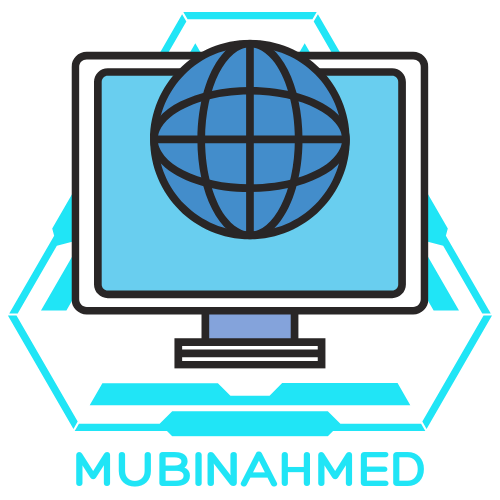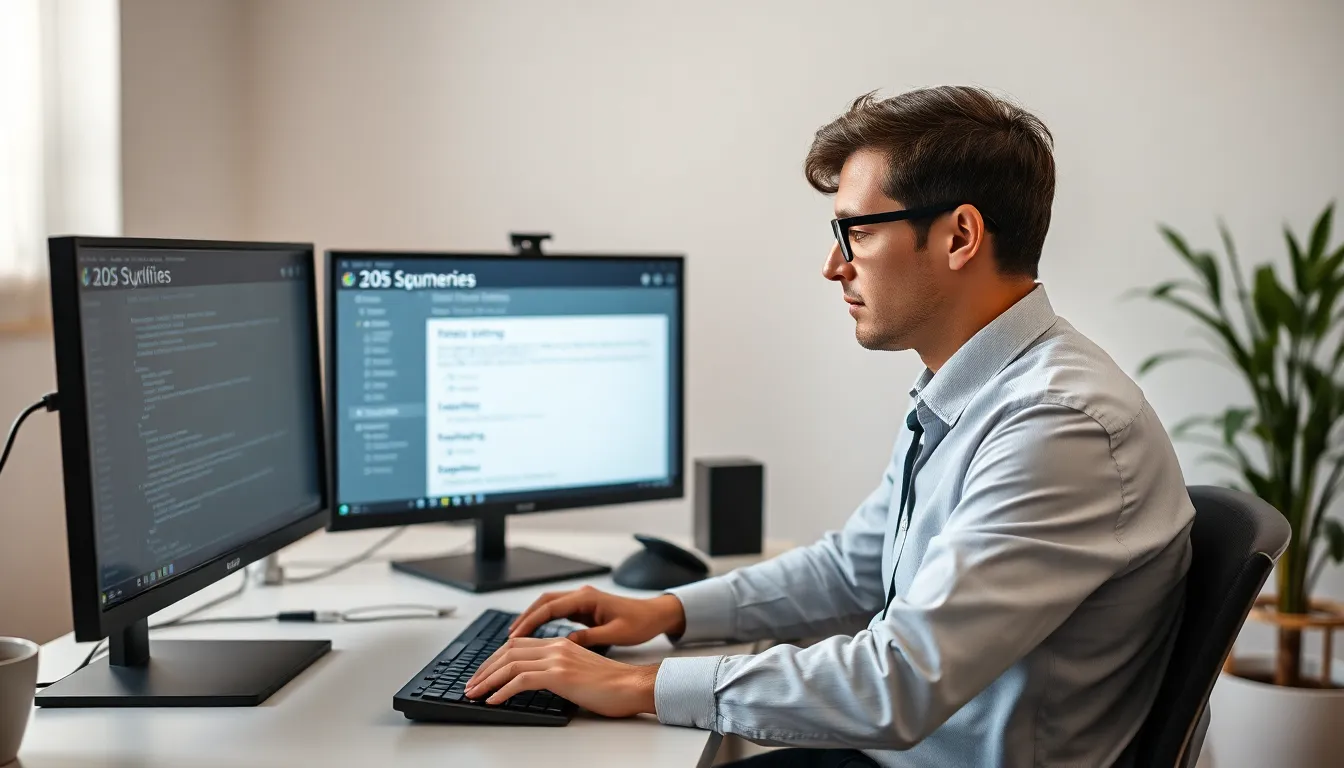In today’s digital landscape, remote access security isn’t just a nice-to-have; it’s a must-have. With more employees working from home than ever, the stakes are higher than a cat on a hot tin roof. One wrong click can unleash chaos, turning your secure network into an open buffet for cybercriminals.
Table of Contents
ToggleOverview of Remote Access Security
Remote access security is essential for protecting digital assets in today’s work environment. Organizations rely on secure connections to enable employees to access networks remotely. Various threats such as malware, phishing, and data breaches increase significantly when employees work outside traditional office settings.
To safeguard sensitive data, organizations implement multiple security measures. Virtual private networks (VPNs) encrypt internet traffic, making it difficult for cybercriminals to intercept information. Multi-factor authentication (MFA) adds another layer of security by requiring users to verify their identity through additional methods, such as SMS codes or biometric data.
Firewalls play a crucial role in monitoring traffic and blocking unauthorized access. Regular updates to software and operating systems also help close vulnerabilities that hackers might exploit. Security awareness training for employees is vital, as human error often leads to security breaches.
By combining technological solutions with employee education, organizations can significantly reduce risks associated with remote access. Understanding these security principles fosters a safer remote work environment. Maintaining a proactive approach to remote access security remains crucial, as cyber threats evolve continually. Regular assessments of security protocols ensure organizations stay ahead of potential threats.
Importance of Remote Access Security

Remote access security plays a vital role in safeguarding digital assets in today’s digital workplace. As online threats increase, organizations prioritize robust security measures to protect sensitive information.
Protecting Sensitive Data
Organizations utilize various tools to ensure data confidentiality. Implementing virtual private networks (VPNs) encrypts internet traffic, making it difficult for unauthorized entities to intercept information. Multi-factor authentication (MFA) adds an extra layer of verification, confirming user identity before granting access. Regular updates of security software further mitigate vulnerabilities, decreasing the chances of data breaches. Employees must understand the value of protecting sensitive data, as human actions often directly influence security measures’ effectiveness.
Mitigating Cyber Threats
Cyber threats continuously evolve, targeting remote access points. Phishing attacks remain a significant concern, often tricking employees into revealing sensitive information. Firewalls serve as a first line of defense, monitoring network traffic and blocking suspicious activity. Regular security audits can help identify and resolve weaknesses in an organization’s infrastructure. Organizations foster a culture of cybersecurity awareness, ensuring employees recognize potential threats and understand the importance of maintaining secure access protocols.
Common Threats to Remote Access Security
Remote access security faces numerous threats that can compromise sensitive data and systems. Understanding these risks is essential for effective protection.
Phishing Attacks
Phishing attacks target users through deceptive emails or messages. Cybercriminals often impersonate reputable entities to trick individuals into revealing personal information. The prevalence of these attacks has surged, particularly in remote work scenarios. Employees may click on malicious links or provide credentials without verifying the sender’s authenticity. Organizations combat phishing risks by implementing email filters and conducting regular training sessions. Awareness plays a crucial role in recognizing potential scams and ensuring users maintain a skeptical approach toward unsolicited communications.
Malware and Ransomware
Malware and ransomware can infiltrate systems through various means, such as infected downloads or compromised connections. Malware often disrupts operations or steals sensitive data, while ransomware encrypts files and demands payment for their release. The rise of remote work has made employees more susceptible to these threats, often because of inadequate security measures. Regular software updates and antivirus solutions serve as essential defenses against these malicious attacks. Organizations must prioritize enhanced endpoint protection and employ robust backup strategies to mitigate the impact of potential ransomware incidents.
Best Practices for Ensuring Remote Access Security
Effective remote access security hinges on the adoption of comprehensive best practices. Organizations can significantly reduce risks by implementing robust security measures.
Strong Password Policies
Creating strong password policies serves as a foundational element of remote access security. They should require complex passwords that include a mix of letters, numbers, and special characters. Systems benefit when users change passwords regularly, ideally every 90 days. Enforcing password history management prevents users from reusing previous passwords. Password managers can assist employees in generating and storing secure credentials safely. By prioritizing these practices, organizations enhance their defense against unauthorized access.
Multi-Factor Authentication
Implementing multi-factor authentication (MFA) adds an essential layer of security. MFA requires users to provide two or more verification factors before granting access. Organizations can use methods such as SMS codes, authenticator apps, or hardware tokens. This approach ensures that even if passwords are compromised, unauthorized users cannot easily access sensitive information. Enhancing login security through MFA significantly reduces the likelihood of data breaches. Commitment to this multi-layered strategy proves vital in strengthening remote access protocols.
Regular Software Updates
Conducting regular software updates is critical for maintaining security. Ensuring that all systems and applications are up to date protects against vulnerabilities. Organizations should establish automatic updates whenever possible to streamline the process. Notably, outdated software is a common entry point for cybercriminals. Timely patching of known security flaws prevents exploitation by malware or ransomware. Emphasizing the importance of software maintenance fosters a culture of vigilance and proactive security measures.
Tools and Solutions for Remote Access Security
Implementing effective tools and solutions is essential for enhancing remote access security. These technologies help organizations protect against threats while allowing employees to work remotely.
VPNs and Their Role
Virtual Private Networks (VPNs) play a vital role in securing remote connections. They encrypt internet traffic, ensuring data transmission remains private and protected from eavesdropping. Many organizations utilize VPNs to create secure tunnels between remote users and internal networks, reducing the risk of data breaches. By masking the user’s IP address, VPNs further enhance anonymity online. Choosing a reputable VPN provider becomes crucial as it helps safeguard sensitive corporate information. Regularly updating VPN software also strengthens security, addressing vulnerabilities that could be exploited by cybercriminals.
Remote Desktop Solutions
Remote desktop solutions enable users to access their office desktops from various locations securely. These tools facilitate collaboration by allowing seamless access to applications and files, regardless of where employees are situated. Most solutions incorporate robust security features such as encryption, secure gateways, and multi-factor authentication for added protection. Some popular remote desktop solutions include Microsoft Remote Desktop, TeamViewer, and AnyDesk. Each offers distinct features tailored to different organizational needs, making it essential for businesses to evaluate their specific requirements. Ensuring that software is periodically updated also minimizes potential security risks associated with remote desktop usage.
Remote access security is non-negotiable in today’s work environment. As organizations adapt to remote work, they must prioritize safeguarding their digital assets. By implementing robust security measures like VPNs and MFA, businesses can create secure connections that protect sensitive data.
Continuous education and awareness among employees play a vital role in reducing risks associated with human error. Regularly updating software and employing strong password policies further enhance security protocols.
Ultimately, a proactive approach to remote access security not only defends against evolving cyber threats but also fosters a culture of cybersecurity awareness that empowers employees to recognize and respond to potential risks effectively.




